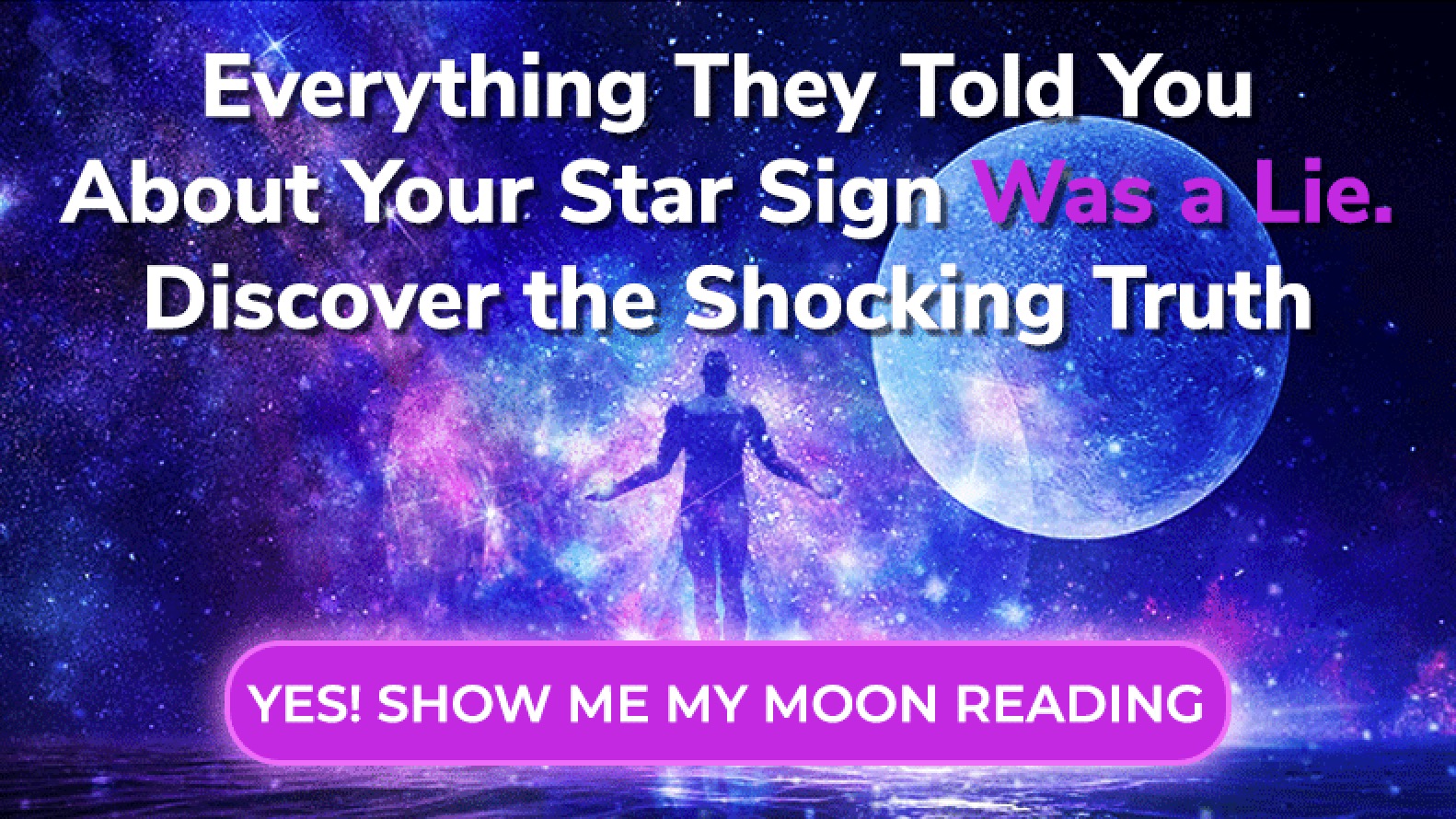Want to learn more about astrology synastry? You have come to the right place.
Synastry refers to the art of relationship astrology. This exciting study describes how individuals interact with each other as well as the strengths and challenges we must overcome in this relationship.
We are all born with an individual birth chart that imprints the zodiac signs and the planet’s dynamism. All people have the same planets and celestial bodies in their astrological charts, but their positions by House, zodiac sign, and aspect differ from one person to the other.
The unique interplay and dynamics resulting describe the complexity of our personalities.
In our relationships, the energies of our birth chart interact with the other person’s birth chart, creating a unique interplay as singular as our individual characters. These composite charts show us the strengths, weaknesses, and blind spots of that particular relationship.
Join our Facebook group to get the answers to your synastry questions from our experienced community.
Most people think Sun Sign compatibility is enough to determine whether two people are meant to be together. We find common questions online, such as “Does a Virgo get along with a Sagittarius?” that could mislead us from the real purpose of our relationship.
While this comparison is somewhat valuable, it is very vague and general. On the other hand, a synastry chart reveals the other factors involved when studying astrological compatibility between two natal charts.
The process of interpretation is similar to the one used in a birth chart analysis, so it’s key to know the basics of astrology to examine synastry charts correctly.
Planets and Luminaries
The most important luminaries to consider when studying a synastry chart are the Moon, Venus, and Mars. The Moon governs each individual’s emotions and how they expect others to give them affection. Venus is the planet of love and determines the attributes and personality traits you are attracted to when looking for a partner. On the other hand, Mars rules our sexual drive and physical desire, making this planet essential to determine chemistry and sexual compatibility.
The Sun and Ascendant or Rising Sign are also important factors to examine in a synastry reading. The Sun sign represents our core personality, while our Ascendant rules our social behavior. We express these two luminaries when first meeting someone and feel attracted to them based on the dynamic of the Sun and Ascendant.
After getting to know each other more intimately, other aspects such as the Moon, Venus, or Mars emerge. In short, the Sun and Ascendant draw two strangers to each other while the Moon, Venus, and Mars determine if this attraction is solid enough to evolve into a relationship.
Aspects
Conjunction
This aspect refers to two planets in the same sign, boosting their significance and influence. This is one of the most powerful aspects you can find in an astrology chart and synastry reading, creating harmony or conflict, depending on the planets involved.
Too many conjunctions in a synastry chart can be problematic as it means that these two individuals have very similar personalities.
Trine (planets that form 150° angle)
This soft aspect is one of the most harmonious in a synastry chart. This aspect basically means that these two planets are compatible and create a balanced combination. However, it could also lead to boredom and monotony within the relationship since there’s nothing that challenges each other. In short, passion could be lacking in this love match.
Sextile (planets form a 60° angle)
This is a harmonious aspect that predicts a lasting and sustainable relationship. It’s similar to the trine but is more dynamic since these two zodiac signs are in different elements.
Square (planets form a 90° angle)
The square is one of the most challenging aspects found in a synastry chart but also one of the most passionate. Both partners feel intensely attracted and repelled to each other at the same time. They could present an urge to dominate each other and bring out the worst in them when they are in that relationship.
Opposition (planets form a 180° angle)
The opposition is also a challenging aspect that creates tension and conflict. It talks about two similar energies with opposite ways of manifestation, like a mirror that creates a compelling magnetism. The attraction created by this aspect is strong but the dynamic of this relationship is challenging.
Quincunx (planets are within a 1° – 2° orb)
The energies of these two celestial bodies don’t fully harmonize and tend to create a problematic effect. However, the quincunx creates a healthy competitive spirit between these two partners.
Main Aspects in Synastry
All aspects formed between the Sun, Moon, Ascendant, Mars, or Venus create a compelling attraction between two individuals. Venus and Mars’s interactions suggest sexual interest, especially challenging ones such as square or opposition. But at the same time, they present obstacles and challenges that must be worked out consciously if they want to sustain their relationship over time.
Trines and textiles bring harmony but also stagnation if both partners are too comfortable and don’t do anything that excites them.
Aspects formed between Mars or Venus and the Moon suggest a harmonious emotional attachment. Challenging aspects can hinder the relationship and prevent these two people from creating a more intimate relationship. Soft aspects make the interaction easy and comfortable, being able to sustain the relationship over time.
Houses
In a synastry reading, the position of the houses determines the role each partner projects on the other person. Planets in houses 1st, 5th, 7th, and 8th are the most relevant as they relate to our relationships and social interactions.
1st House (Ascendant)
The Ascendant or 1st House represents our outer personality. It determines the first reaction we experience when meeting someone for the first time. When there are planets in this House, these two people find each other physically appealing or engaged by their personalities, at least at the beginning.
5th House
This House rules romance and pleasure. Many planets in this House suggest a strong friendship and affinity between these two individuals. Both partners like the same activities and hobbies and usually have the same tastes.
7th House (Descendant)
This House rules relationships and business partnerships. When two charts present too many planets in their 7th House, it could suggest a successful marriage or solid companionship.
8th House
This House governs sex and intimacy. Depending on the planets involved, it could suggest control issues and power struggles. It could also indicate obsessive tendencies and an intense, magnetic attraction.
Synastry charts show the complex dynamics expressed in human interaction. Our relationships mirror our strengths and weaknesses, becoming self-development tools that help us become better versions of ourselves. If you want a deeper understanding of your current love affair, consider all aspects of your synastry chart.
Truly understanding Astrology Synastry could mean the difference between great happiness and misery down the line. Find a psychic medium near you today, whether you’re in New York City, Chicago, Utah, Seattle in the US, or somewhere completely different, you can get the expert guidance you deserve. Don’t forget you can also get a psychic email reading at low cost, or try the best online psychic reading sites such as Kasamba, Oranum, PsychicOz, Bitwine, Everclear Psychic and more.
Topics & Questions
What does synastry in astrology mean?
Synastry shows the unique and singular dynamic that is formed between two charts and individuals. We can see in this chart the reasons why we are attracted to that person as well as the obstacles and blind spots.
Are synastry charts accurate?
Synastries are accurate tools that determine in-depth compatibility between two people. This is because it goes beyond Sun sign compatibility. The astrologer reviews the aspects formed by the different planets, the houses in which they appear, and the individual chart of each partner.
What is a good compatibility score in synastry?
Compatibility scores between two birth charts’ planets can be determined by studying the distance between their orbs. By doing so, it is possible to record how challenging or flowing their aspects are, resulting in a given score. We consider an index score of 200 to be a good compatibility match in synastry.
What are exact aspects in synastry?
Aspects in synastry are highly relevant. They show how harmonious or challenging our planets connect with our partner’s planets. When they are exact, they form the same precise degrees as each other (180° in an opposition, 90° in a square, etc.) Exact degrees indicate a more powerful connection between those planets.
Related posts:
- Vertex Conjunct Ascendant Synastry
- Saturn Conjunct Ascendant Synastry
- Mars Conjunct Ascendant Synastry
- Synastry Aspects True Love
- Mars Square Pluto Synastry
- Neptune Conjunct Ascendant Synastry
- Moon Conjunct Ascendant Synastry
- Mars Opposite Pluto Synastry
- Venus Trine Saturn Synastry
- Venus Conjunct Mars Synastry



